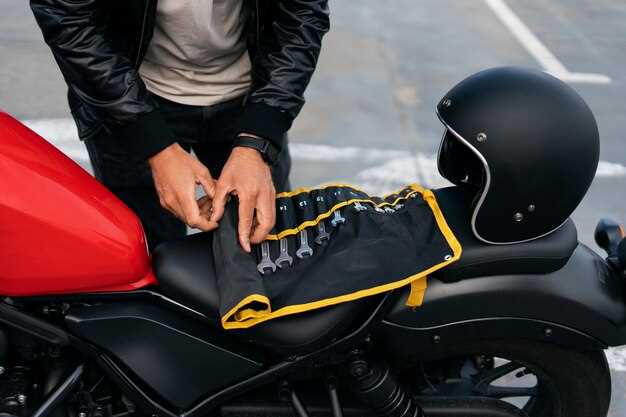

In the world of motorcycling, achieving peak speed performance is a pursuit shared by enthusiasts and competitive riders alike. The thrill of feel-the-wind acceleration and the adrenaline rush during high-speed runs are what many riders seek. However, obtaining optimal speed is not merely about twisting the throttle; it involves a comprehensive understanding of your motorcycle’s mechanics and precision tuning. Proper adjustments can significantly enhance power output, responsiveness, and overall riding experience.
Every motorcycle is engineered with a set of specifications that define its performance capabilities. Factors such as engine tuning, aerodynamics, and weight distribution play critical roles in reaching maximum speed. By focusing on each of these elements, riders can fine-tune their machines to unlock their true potential. This article will delve into various aspects of motorcycle tuning that can lead to improved speed performance, including modifications to the engine, suspension setups, and optimizing aerodynamics.
Whether you are a seasoned racer or a casual rider seeking to elevate your motorcycle’s performance, understanding the fundamentals of tuning is essential. From selecting the right aftermarket parts to adjusting your bike’s settings for maximum efficiency, every decision can bring you one step closer to achieving the thrill of hitting your bike’s peak speed. Join us as we explore the key areas to focus on for optimal motorcycle tuning.
Optimizing Engine Performance through Carburetor and Fuel System Adjustments

To achieve peak speed performance in your motorcycle, fine-tuning the carburetor and fuel system is crucial. The carburetor is responsible for mixing air and fuel in the correct ratio. Adjustments to this system ensure optimal engine performance and efficiency.
Start by identifying the correct jet size for your carburetor. Changing the main jet alters the fuel delivery at wide-open throttle. If your bike hesitates or stumbles at full throttle, consider increasing the jet size. Conversely, if it runs too rich, a smaller jet may be necessary. Make changes incrementally and test the performance after each adjustment.
Next, focus on the pilot jet and idle mixture screws. A properly adjusted pilot jet ensures that the engine idles smoothly and runs efficiently at low RPMs. Turn the idle mixture screw in or out to achieve the best idle quality. Allow the engine to warm up and listen for changes in sound; optimal performance will be characterized by a steady and stable idle.
Check the needle position as well. Raising the needle improves mid-range throttle response, while lowering it may help in rich conditions. Experimenting with the clip position can significantly affect acceleration and engine behavior across various throttle positions.
In addition to carburetor adjustments, ensure that your fuel system is free from obstructions. Inspect fuel lines for leaks and replace any worn components. A clean fuel filter facilitates proper fuel flow, which is essential for optimal performance. Consider using high-quality fuel to prevent deposits and enhance combustion efficiency.
Finally, balance the carburetors if your motorcycle is equipped with multiple units. Synchronizing the airflow ensures that each cylinder receives an equal fuel mixture, maximizing power output and response. Use a vacuum gauge or a carburetor synchronizer to achieve precise adjustments.
By methodically optimizing the carburetor and fuel system, you’ll unlock your motorcycle’s true potential, leading to improved speed and efficiency on the road.
Upgrading Aerodynamics: Fairings and Body Modifications for Maximum Speed
Improving a motorcycle’s aerodynamics is crucial for achieving peak speed performance. Fairings and body modifications play a significant role in reducing drag and enhancing stability at high speeds. By focusing on these elements, riders can experience noticeable gains in overall performance.
Fairings serve as protective coverings for the motorcycle’s engine and rider while streamlining airflow. Full fairings, which encase the entire front and side components, offer superior aerodynamic efficiency compared to half or unfaired models. Selecting a lightweight material such as fiberglass or carbon fiber can decrease overall weight, leading to faster acceleration and improved handling.
When upgrading fairings, it’s essential to consider shape and design. Features such as integrated air intake vents can direct airflow strategically, cooling the engine while minimizing turbulence. Additionally, designing fairings with a more pointed or angular shape can enhance airflow and reduce resistance.
Body modifications also significantly impact aerodynamics. Lowering the motorcycle’s profile by adjusting the suspension can lead to reduced wind resistance. Tail sections designed to taper can help streamline the rear, mitigating vortex drag. Implementing minimalistic components, such as an integrated tail light and subtle side panels, can further assist in smooth airflow across the bike.
Another effective modification is the addition of an adjustable windscreen. This feature allows riders to customize their wind resistance based on conditions, optimizing for either increased top speed or enhanced stability. A taller windscreen can deflect wind away from the rider, reducing fatigue during long rides at high speeds.
Lastly, riders should ensure all modifications adhere to safety regulations and maintain the structural integrity of the motorcycle. Proper fitting and alignment of fairings and body components are critical to avoid any unintended aerodynamic flaws. With thoughtfully executed upgrades in aerodynamics, riders can unlock the full potential of their motorcycles, achieving maximum speed and performance on the road.
Tire Selection and Pressure: Ensuring Maximum Grip and Minimal Rolling Resistance

Choosing the right tires is crucial for optimizing motorcycle performance, particularly in terms of grip and rolling resistance. Tire selection should be based on the intended use of the motorcycle–be it sport riding, touring, or off-road. Sport tires generally offer better grip on paved surfaces due to their softer compounds and unique tread patterns, while touring tires prioritize longevity and comfort.
In addition to the tire type, tread pattern plays a vital role in performance. Tires designed for dry conditions feature slick surfaces with minimal grooves, which enhance grip. Conversely, all-weather or wet-condition tires have deeper grooves that provide better water dispersal but may come at the cost of increased rolling resistance.
After selecting the appropriate tires, maintaining the correct tire pressure is essential. Under-inflated tires increase rolling resistance, leading to decreased fuel efficiency and compromised handling. Conversely, over-inflated tires can reduce the contact patch with the road, impacting grip negatively. Regularly check tire pressure using an accurate gauge, and adjust it according to the manufacturer’s specifications for optimal performance.
Temperature also affects tire pressure. Tires heat up during riding, causing pressure to rise. It’s advisable to check tire pressure when tires are cold, ideally before the first ride of the day. Keeping a consistent air pressure ensures that the tires perform as expected, delivering both maximum grip and minimal resistance.
Finally, consider the weight distribution of your motorcycle. If your bike is heavily loaded, the ideal tire pressure may differ from standard levels. Adjusting tire pressure based on load conditions can enhance grip and performance, providing a safer and more enjoyable riding experience.





